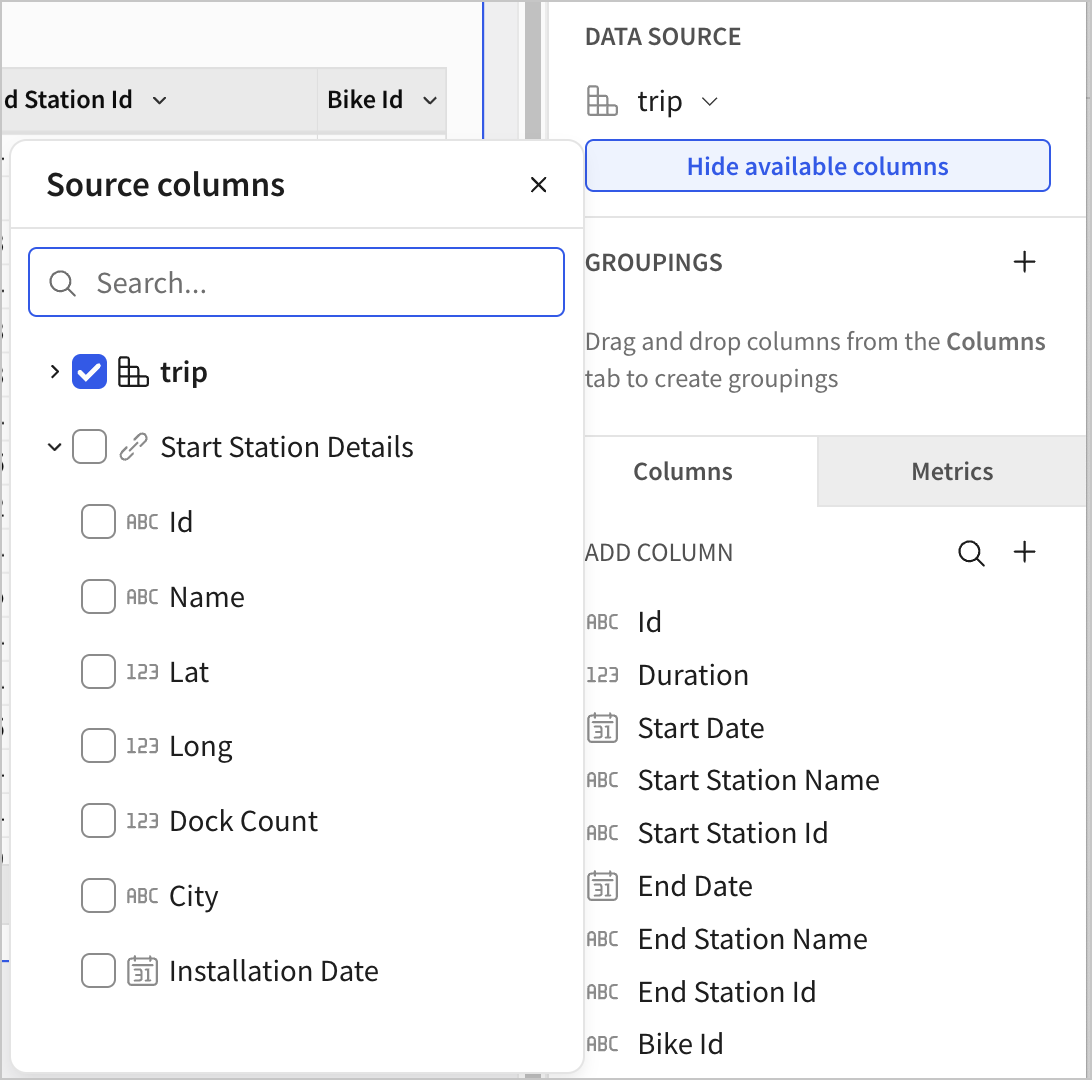AI apps
File upload columns, controls, and form fields (Beta)
Use file columns in input tables to upload images, documents, and videos directly to Sigma. You can also use file upload controls to select files and upload them to destination input tables.
File columns can accept the following file types, which can be restricted at the column level or in the control properties, if applicable.
- Images: JPEG/JPG, PNG, GIF, TIFF, BMP, WebP, SVG
- Documents: PDF, CSV, DOC/DOCX, XLS, XLSX, Pages, Numbers, Keynote, JSON, Text file, XML
- Videos: MP4, MOV, AVI, MKV, WebM, M4V
For more information, see Configure file columns on input tables and Create and configure a file upload control. To access file columns and file upload controls, your organization must configure a storage integration to support file uploads.
API
New API endpoints to retrieve data model details
The following endpoints to retrieve data model details with a dataModelId are now available:
- List lineage for a data model (
GET /v2/dataModels/{dataModelId}/lineage) - List elements in a workbook (
GET /v2/dataModels/{dataModelId}/elements) - List columns for all elements in a workbook (
GET /v2/dataModels/{dataModelId}/columns)
Use these endpoints to efficiently retrieve details about elements in a data model.
New API endpoints to retrieve workbook details
The following endpoints to retrieve workbook details with a workbookId are now available:
- List lineage for a workbook (
GET /v2/workbooks/{workbookId}/lineage) - List elements in a workbook (
GET /v2/workbooks/{workbookId}/elements) - List columns for all elements in a workbook (
GET /v2/workbooks/{workbookId}/columns)
Use these endpoints to more efficiently retrieve details for an entire workbook, instead of details for a specific workbook page or element.
Workbook elements
Hide or show fixed pivot table headers (GA)
The ability to hide or show fixed row and column headers in pivot tables is now generally available.
See Hide or show fixed pivot table headers.
Image alignment settings
Image elements and container background images now support Vertical and Horizontal alignment options within the element frame. For more information, see Image elements and Use containers to organize workbook layouts.
Image shape setting
You can use the Shape setting on an image element to change the shape of an image uploaded to Sigma. For more information, see Image elements.
Workbook features
Copy input table data when swapping sources and applying version tags (GA)
When changing the connection used by input tables in a document or applying a version tag to a document with an input table, you can copy the input table data to the new connection or tagged version.
For more information on copying input table data when changing connections, see Swap the connection used by an input table.
For more information on copying input table data when applying a version tag, see Use input tables with version tagging.
Version tagging for warehouse views (GA)
You can create warehouse views from a tagged version of a workbook or data model. By creating a warehouse view from a tagged version, you can maintain a stable query for a virtual table in your warehouse, regardless of changes made to the published version. For more information, see Use warehouse views with version tagging.
Bug fixes
-
Custom page headers now span the full workbook width, instead of matching the selected page width.
-
Tagging a workbook or data model version updates the owner of the tagged version to the user who tagged the version of the document.
-
When tagging a workbook version that uses a data model as a source, selecting the checkbox to Allow user to use data sources when they "Save as" resulted in an error: "Error: Cannot grant access to Hidden inodes".
As part of this change, if you select Allow user to use data sources when they "Save as" when tagging a workbook that uses a data model as a source, you must manually grant access on any data models used in the workbook to any users or teams with whom the tagged workbook version is shared.
For more details, see Set a tag on a document.

